|
|
| |
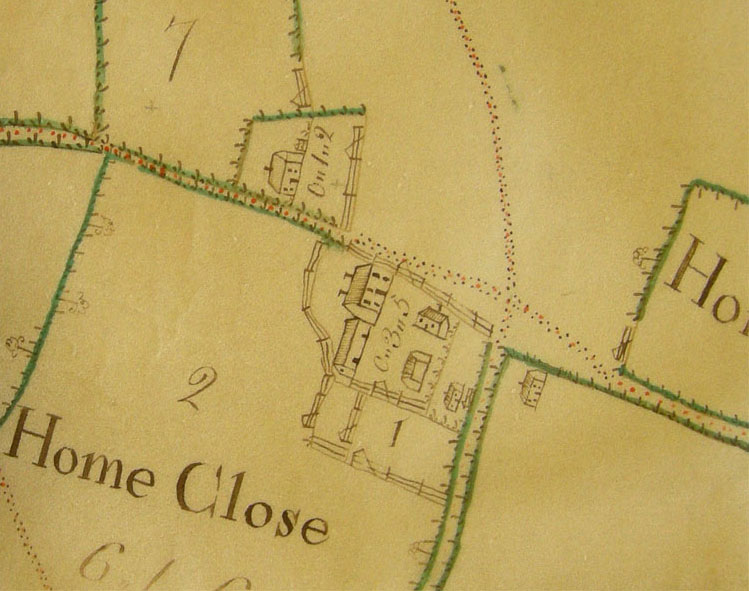 Hoe in 1773. In the
corner of Home Close, the farmhouse shown standing
where Angel farmhouse is today belonged to Thomas
Grounds and may have been where he lived. The present house is a later building,
probably early 19th century. There was a
pub called the Angel in existence in 1780 and it seems
most likely that it was then housed in the
building in the corner of the adjacent field. It
was not owned by Grounds according to this map
of his estate of just over 100 acres.
[Courtesy of Norfolk Record Office MS4532]  This auction sale notice appeared in the Norfolk Chronicle in December 1780. Perhaps the pub was bought then by Thomas Grounds. He is known from his will to have been acquiring other property as late as 1827, shortly before his death, when the estate passed to his son William. 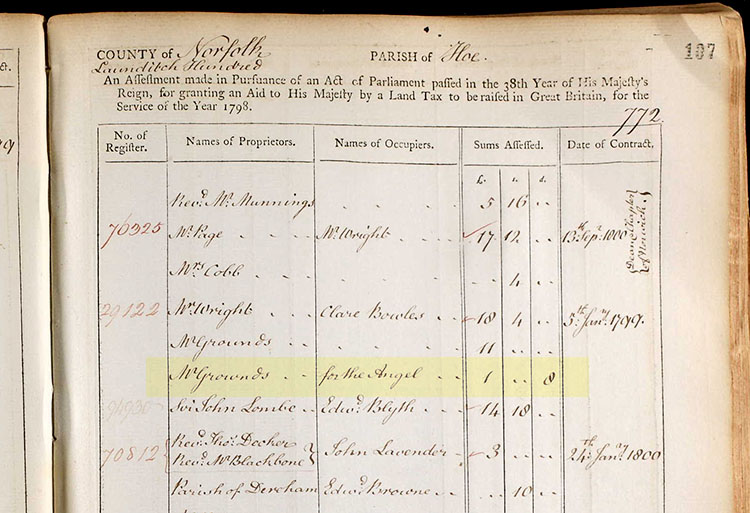 Grounds certainly owned the pub in 1799 when he was assessed for the Land Tax.  Proposed railway plan of 1844 (not the version built) with some added captions. The enlargement is of the area at the bottom of Ayers Lane where it joins Hall Road. In the accompanying book plot 37 is listed as 'Angel Public House' in the possession of William Grounds and the tenancy of Sarah Mitchell. Her husband Robert had been the publican until his death. Plot 35 is described as 'House & Garden, also owned by William Grounds and tenanted by Robert Gant. Notice that the house is a long building at right-angles to the road at this time. [Courtesy of Norfolk Record Office C/Scf 1/310 (plan) & 417 (book) 30 Nov 1844]  Sarah Mitchell carried on the tenancy of the Angel for a time following the death of her husband Robert in 1843 but in 1863 at the age of 56 she became the first person to be employed as a nurse at the Mitford & Launditch Union workhouse at Gressenhall, continuing in service until she was 70 years old. This photograph shows Sarah holding some of the tools of her nursing work. A large key hangs from her apron. A biography of Sarah was written in 2023 by Bridget Howarth for an exhibition at Gressenhall Museum (the former workhouse) on the work and lives of the nursing staff, shown in 2024. Download a pdf of the biography here. [Photograph GRSRM : 2015.23 copyright Norfolk Museums Service, Gressenhall Farm and Workhouse] Sarah was succeeded at the Angel by George Harrold. 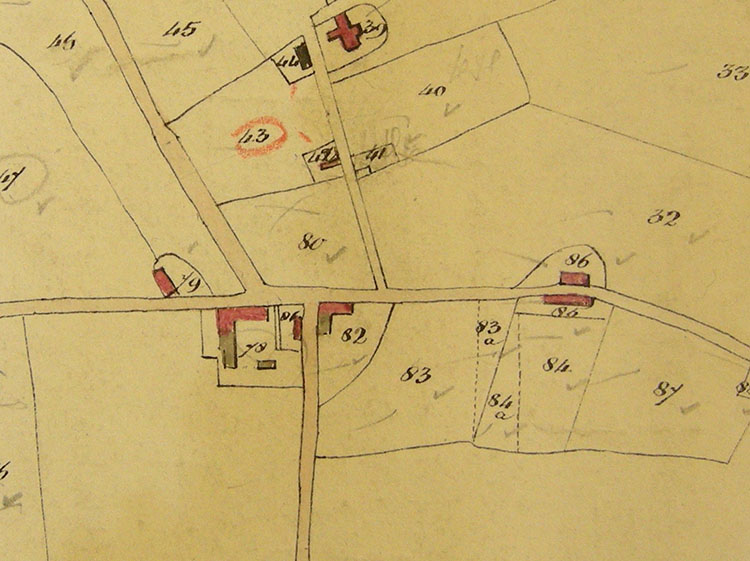 The Tithe Map and Apportionment for Hoe, dated 1847, also lists plot 82 as a public house (unnamed), next to the present Angel (plot 78). In the ownership of William Grounds of Hoe Hall, George Harrold was its tenant. There is a gap in the list of known tenants between 1795 and 1836. [Courtesy of Norfolk Record Office BR 276/1/119]  Neither of the two plans above is a very accurate
survey
Neither of the two plans above is a very accurate
survey and the outlines of the buildings may be unreliable. The railway plan of 1845 (the line built) shows the building now Angel farmhouse in its actual ground plan and may perhaps be relied on for the other buildings, which would show that Grounds had not yet begun or at least not completed his rebuilding of the adjacent cottages, now Crossways and Flint House. [Courtesy of Norfolk Record Office C/Scf 1/244 30 Nov 1845]  [Courtesy of Norfolk Record Office BR 379/Hood, Vores & Allwood, 14/03/1980/Box 70 Survey of Hoe & Dillington 1814] In 1814, just after the enclosure, another survey was carried out in which Thomas Grounds was assessed for the Angel pub, and John Patteson, the Norwich brewer, was assessed for a public house called the Wheat Sheaf. Unfortunately the plan accompanying this survey does not survive – it would have identified the location of the pub. Offered for sale by in 1819 and again on 23rd November 1821 was a PUBLIC HOUSE This description is sufficiently detailed as to be almost certainly that of the house which later became the Angel pub and remained so until its closure in 1932. Did William Grounds buy the house to remove any competition with the Angel? Did he already have in mind moving the Angel's licence to the new building? If so, it doesn't appear to have happened until some time after 1847. At some point in the mid 19th century Grounds rebuilt some of his estate cottages and others disappeared, presumably demolished. The two we know today as Crossways and Flint House look as if they may be in part from that date. Perhaps that's when the Angel moved from its old home to the new. Also unexplained is how and when John Patteson came to own the property. It had belonged to the Grounds family at least since 1773. After the pub's closure it remained a small farm which continued until the 1960s, when it was run by Bertie Holliday.  In the 1861 census there were two lodgers at the Angel, drovers from Fransham, and an elderly widow boarder, 'on the parish'. 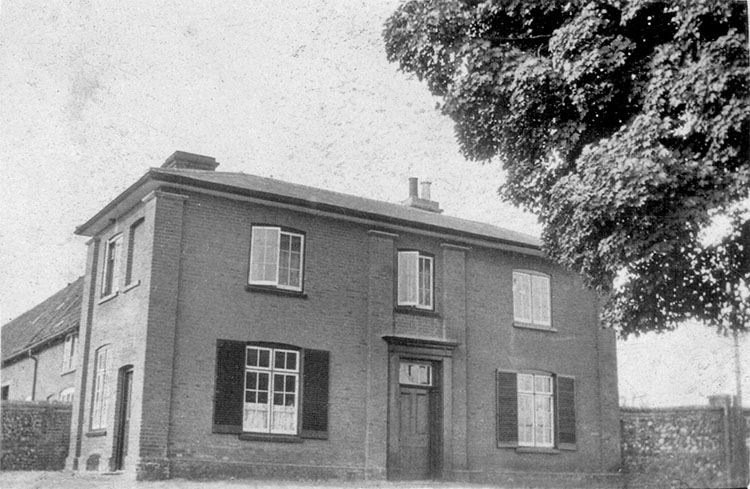 The Angel in about 1915. The side door at the left was the pub entrance; the single public room has a stone floor, unlike others in the house. Beyond the door, at ground level, is the cellar window. Beer was brought up by hand from the cellar into the kitchen, in the range of older buildings behind, and served through a small hatch. The photo was taken by Vernon Gladden who was staying there with the Ayers family, who were his relatives. [By courtesy of Hugh Gladden] 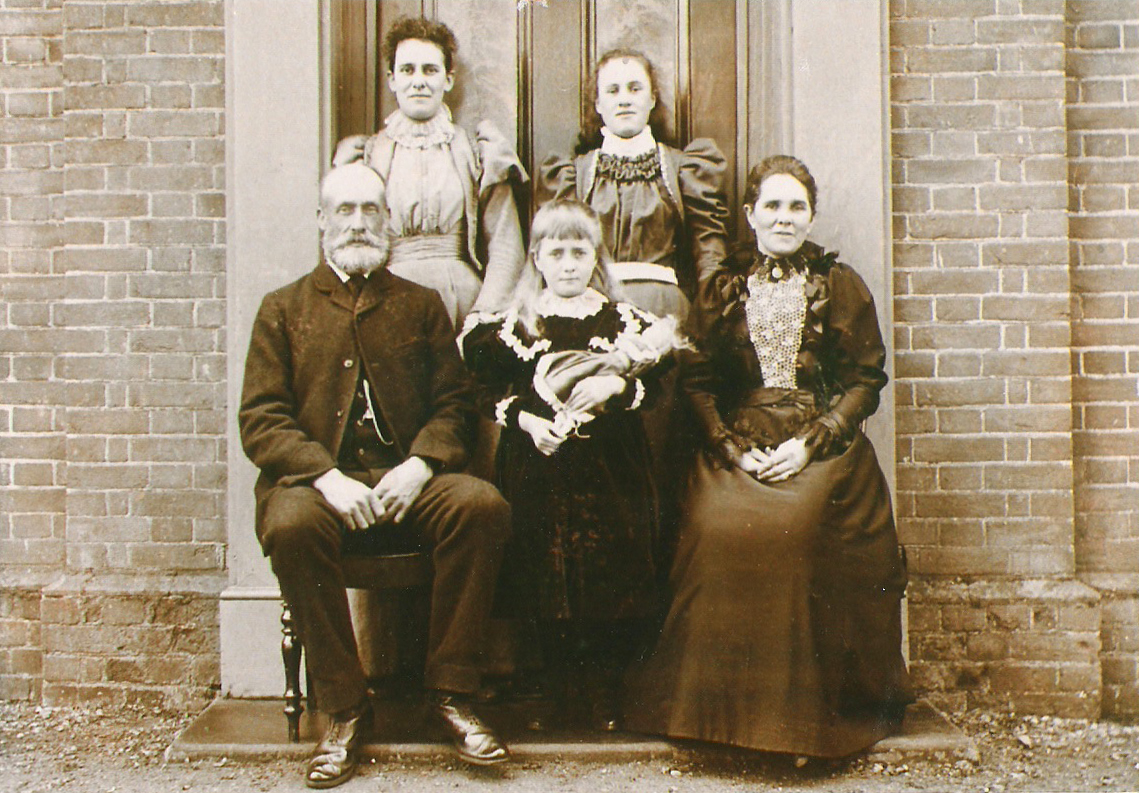 Walter Barnes Ayers was landlord of the pub from 1888 to 1923. His wife Amelia Dane was from Marham and the couple had married in 1874 in Stow Bardolph where Walter was working as a blacksmith. [By courtesy of Lorna Bellamy] 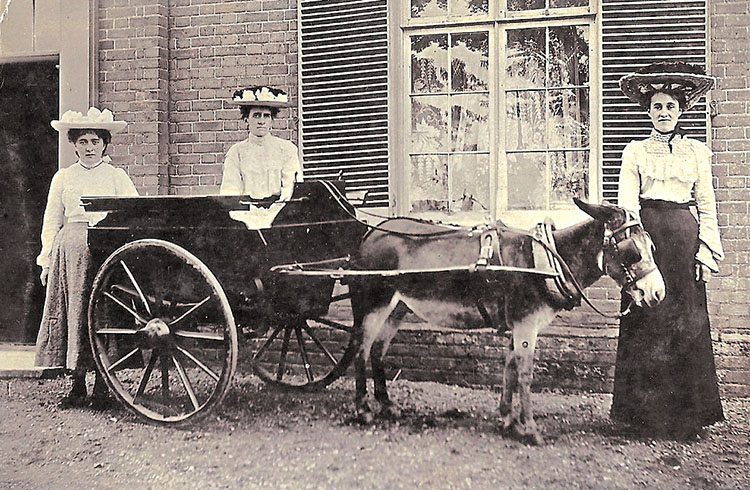 Here are their daughters Lily, Edie (seated in the donkey cart) and Florence in 1905. [By courtesy of Hugh Gladden]  Edith died the year after the photograph was taken.  Walter Ayers was a farmer as well as a
Walter Ayers was a farmer as well as a publican. In 1901 he lost four corn stacks in a fire. 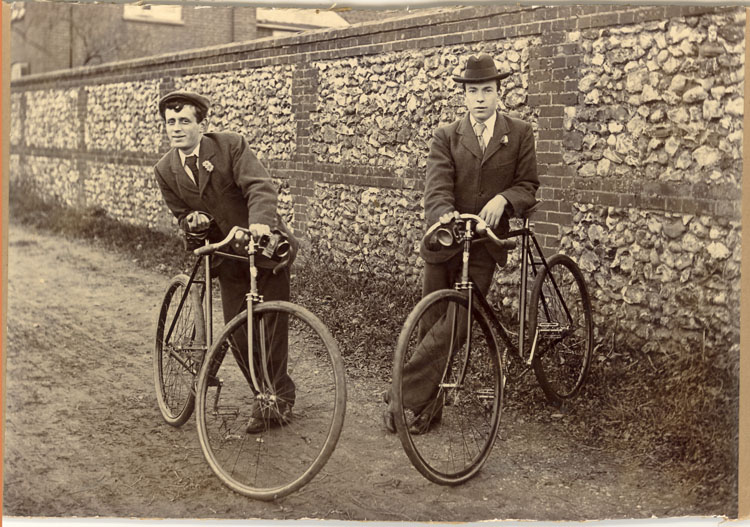 Theophilus (Dick) Barker and friend by the Angel garden wall. Cycling was a craze in the early 1900s.  May 1927. Counties had been obliged to set up professional police forces by an act of parliament in 1856, so quite why Hoe parishioners were still being appointed as constables, the system which preceded the police, isn't clear. 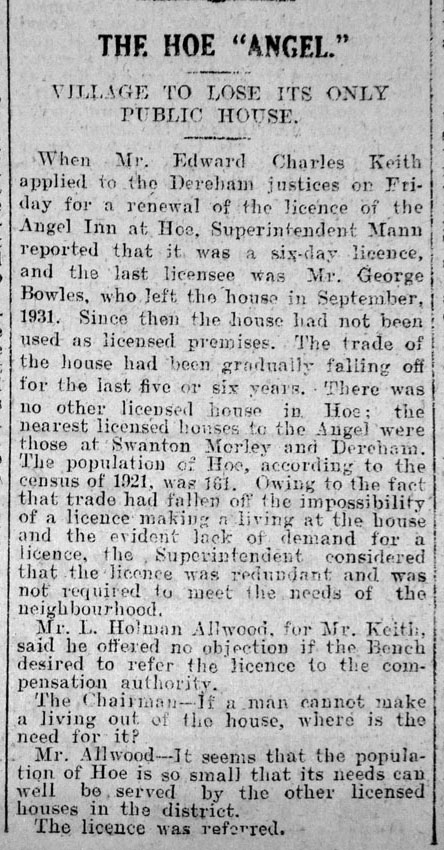
The Angel ceased trading as a pub in 1932. Hoe has been dry since then. 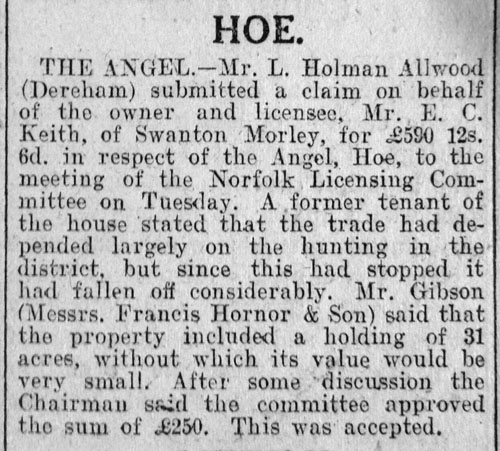 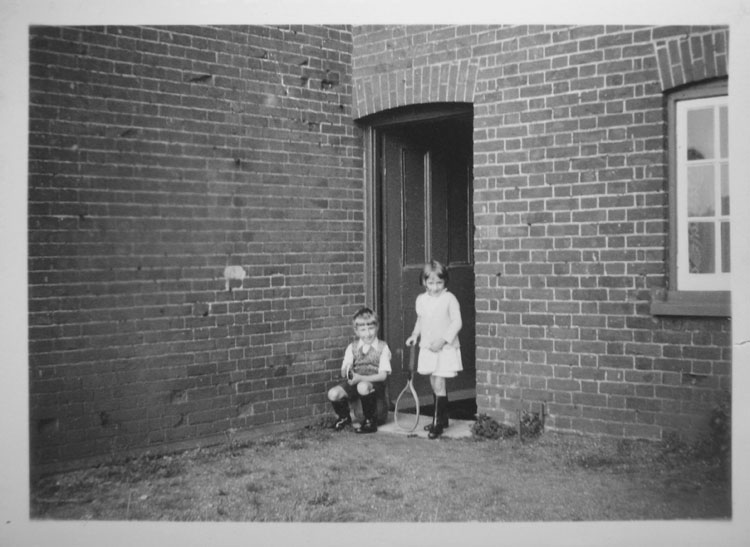 Ron and Jean Wright at the Angel back door. Bertie Holliday, the farmer, was very well liked by everyone. 1940s.  May 1942. Didn't anyone walk? 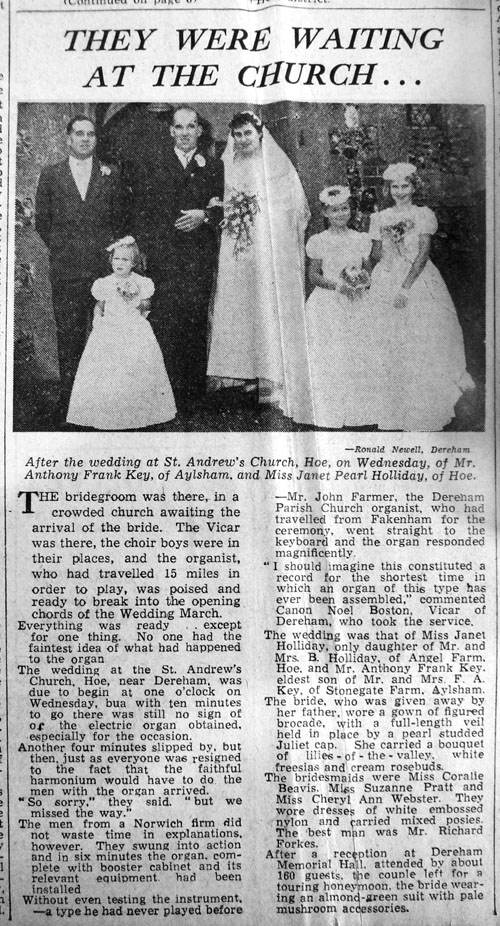 Janet Holliday's wedding, 1959.
Janet Holliday's wedding, 1959.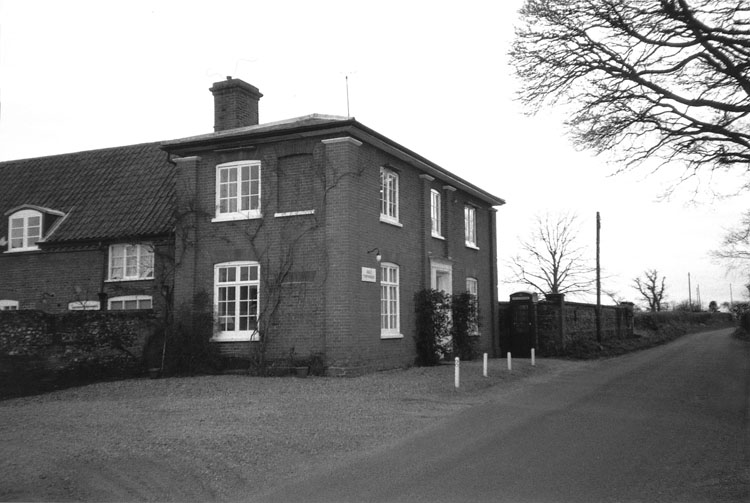 The Angel in about 1985. The door to the bar has been bricked up.  The barn was converted to be part of the house about 1980 by the then owner, Graham Baker. Graham is a film director and made Leaving Lily, a WWI story, some of which is set in Hoe and which Norman Abbott (see The Chestnuts) acted in.  Eilean MacGibbon in the byre, 1985. 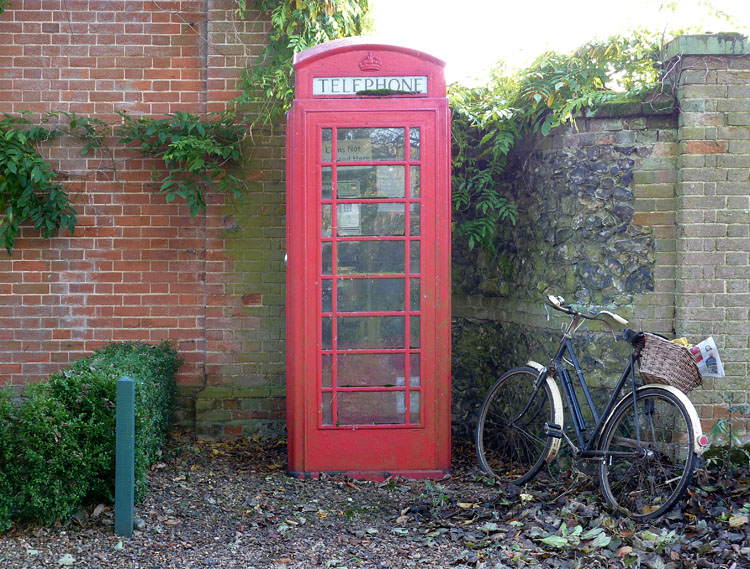 The telephone box doesn't get much custom now. It is a K6, designed by Sir Giles Gilbert Scott in 1935, and is a Grade II listed building. |